Updated: Historic Seaplane Milestones at Manhasset Bay
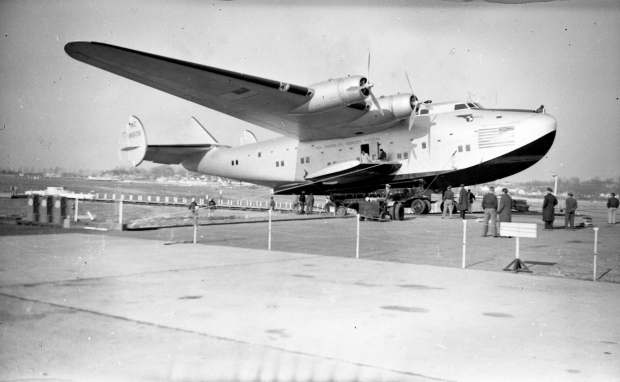
Welcome seaplane fans! Look for a Newsday featured article on the Port Washington Marine Terminal this Sunday.
Inspired by the photographs of the Beutenmuller Family Collection, below is a summary of the historic seaplane milestones at Manhasset Bay. Click here for additional posts on seaplanes.
Enjoy,
Howard Kroplick
Beutenmuller Family Collection
William Beutenmuller (1915-1987) worked as a mechanic, flight mechanic and foreman of maintenance for various Long Island aviation firms including the Port Washington Marine Base, Grumman Engineering and the Sperry Gyroscope Company. He trained with Wright Aeronautical Corp, Pratt & Whitney, Allison and Sikorsky aircraft and engines.
In 1938 he served as the flight mechanic for pilot Cliff Kernochan. Together they traveled with railroad magnate and financier E. Roland Harriman and his family in Harriman's Grumman Goose "Duckling" to Cuba, Guatemala, Mexico, British Columbia and Harriman Ranch Idaho (now Harriman State Park). In 1957, William joined Radio Corporation of America in New Castle, Delaware working with company and military aircraft. He documented many of the airplanes that he worked on and observed and also collected photos from other seaplane and airplane enthusiasts of the period.
Jennifer Robinson, William's granddaughter, has scanned almost 500 negatives from the family collection and has graciously agreed to share them on VanderbiltCupRaces.com . Many of these historic images will be posted over the next few months with additional background on the amazing career of William Beutenmuller.
Additional references
Aviation History of Port Washington
How Port Washington Gave Birth to Pan Am
Boeing B-314 Clippers: Historical Snapshot
June 10, 1921
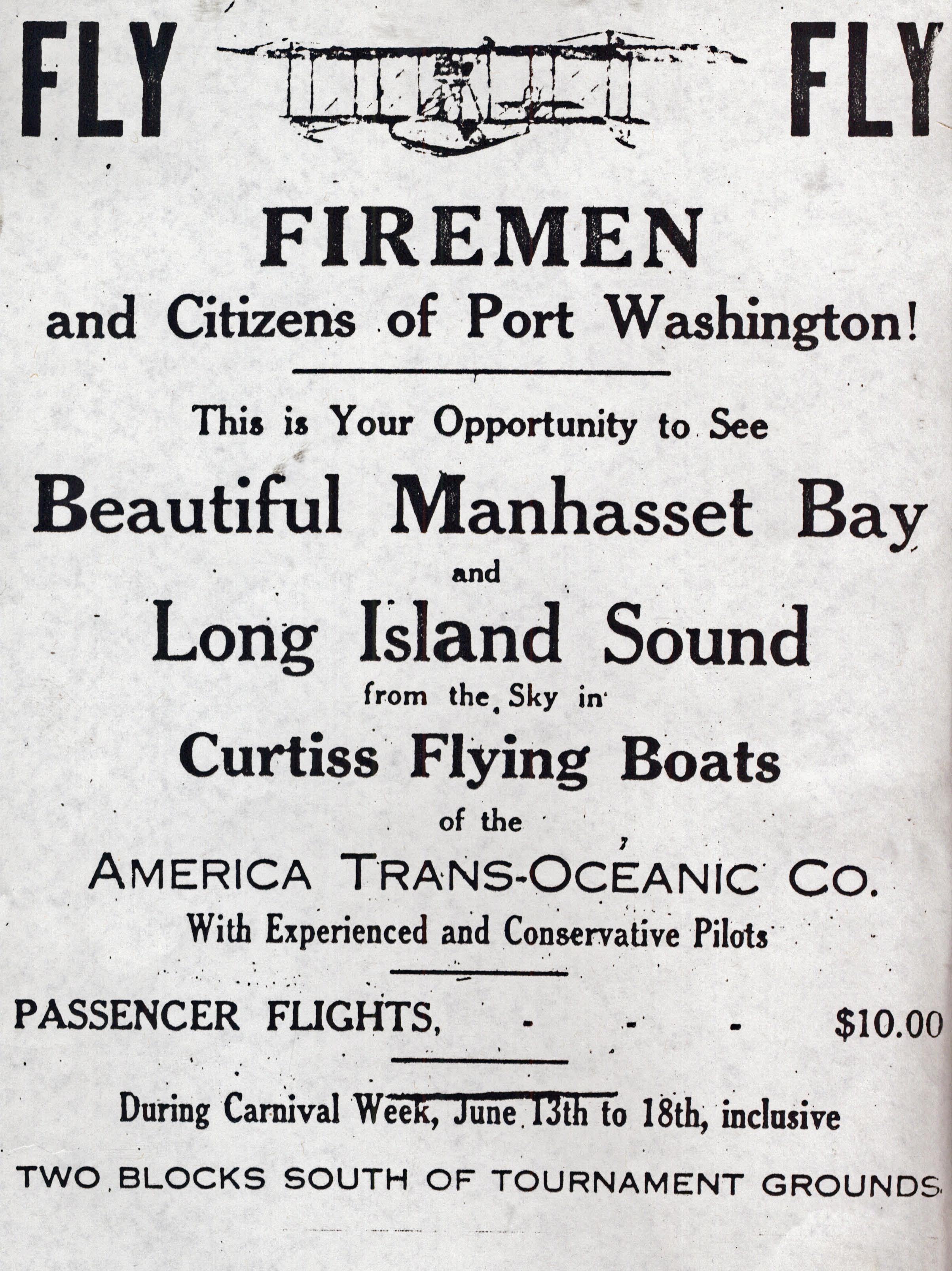
America Trans-Oceanic Company offered tours of "Beautiful Manhasset Bay" in Curtiss Flying Boats.
1923
Glenn Curtiss makes a successful test flight of his seaplane glider.
1929
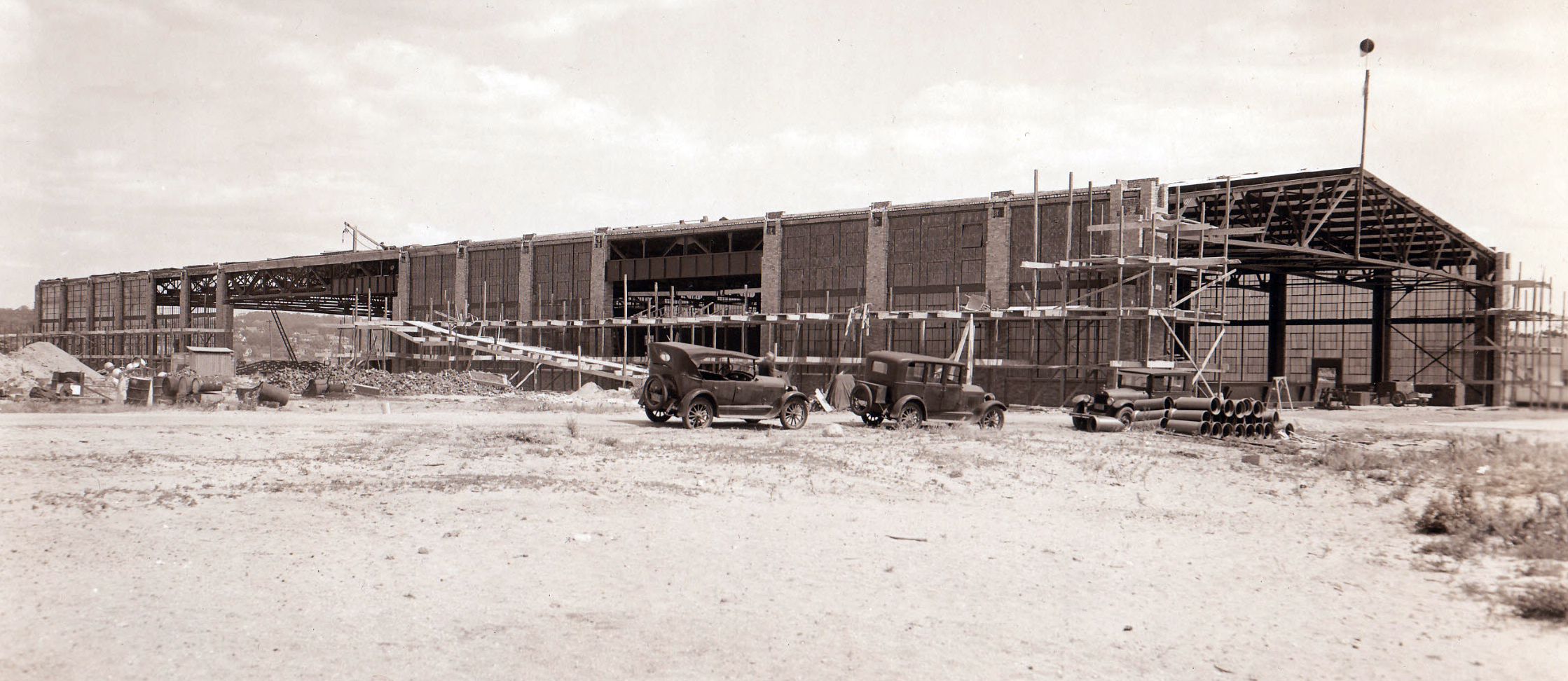
American Aeronautical Corporation builds a $1.5 million 235,000 square foot factory/hangar on 16 acres on Manhasset Isle to build Italian Savoia-Marchetti seaplanes. Dedicated on September 14, 1929, it became a test base for its S-55 and S-56 seaplanes and a rental/hangar/ramp known as "New York Seaplane Airport".
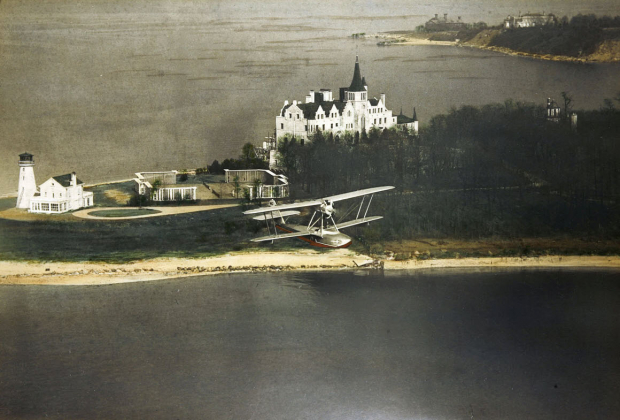
A Savoia-Marchetti S-56 at Alva Vanderbilt Belmont's Beacon Towers at Sands Point.
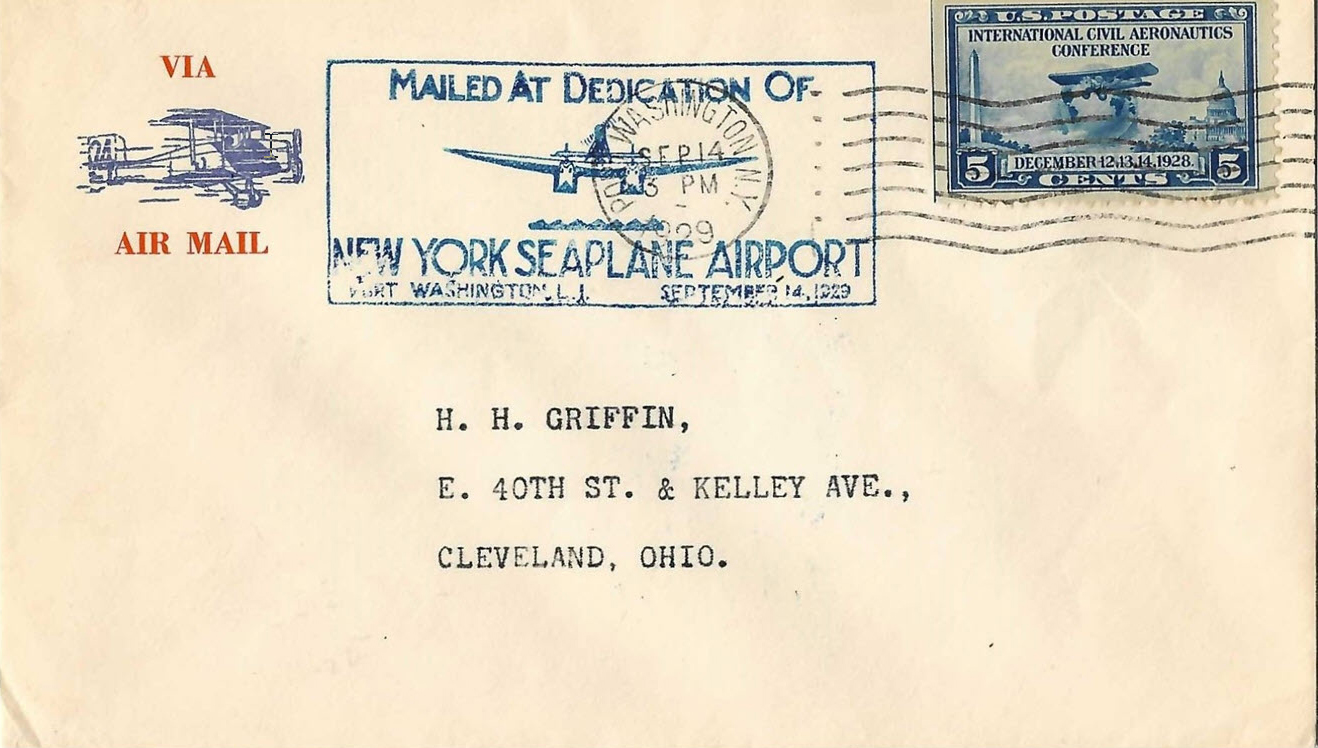
Mailed at Dedication of New York Seaplane Airport, September 14, 1929
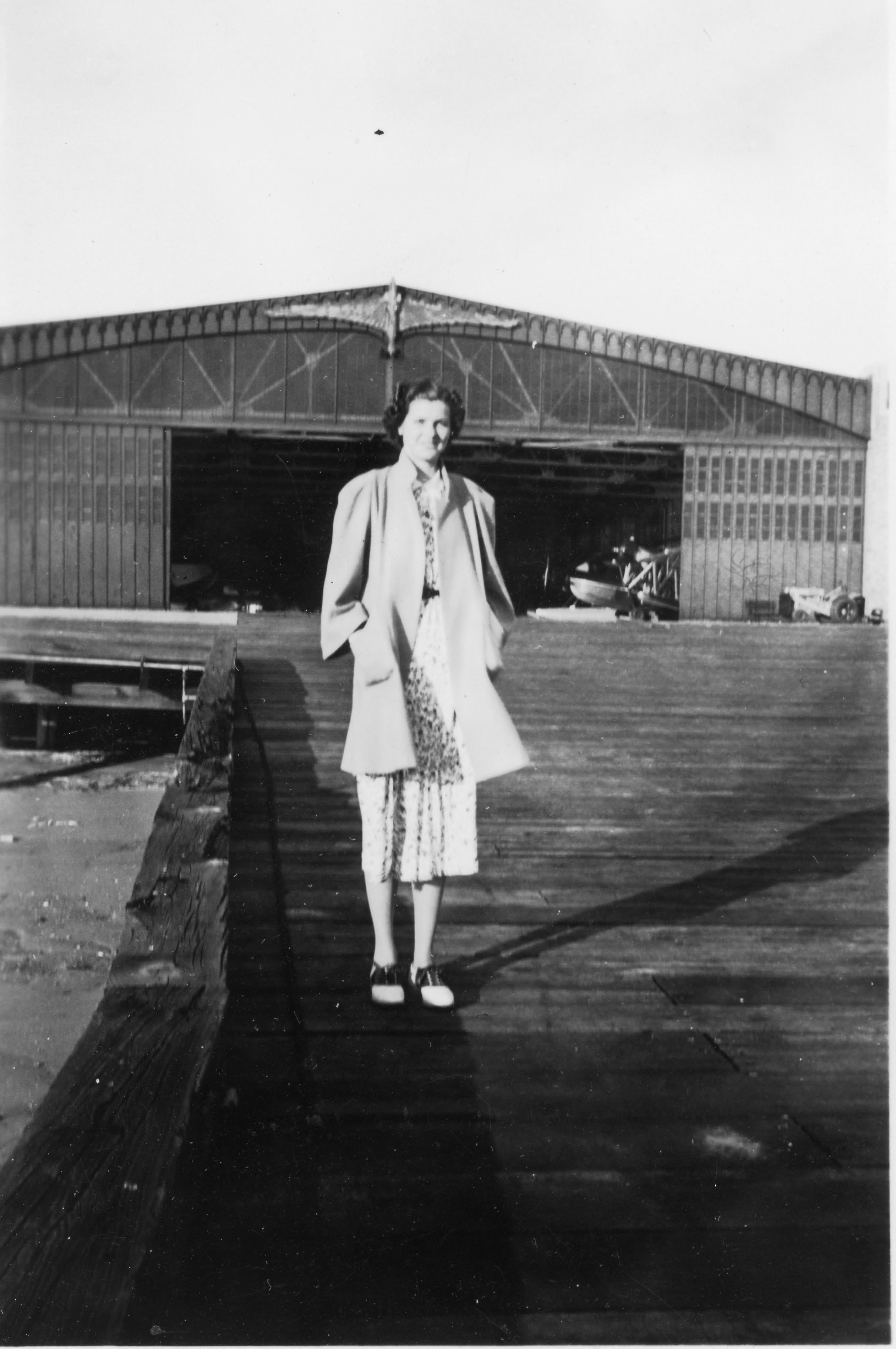
December 1933
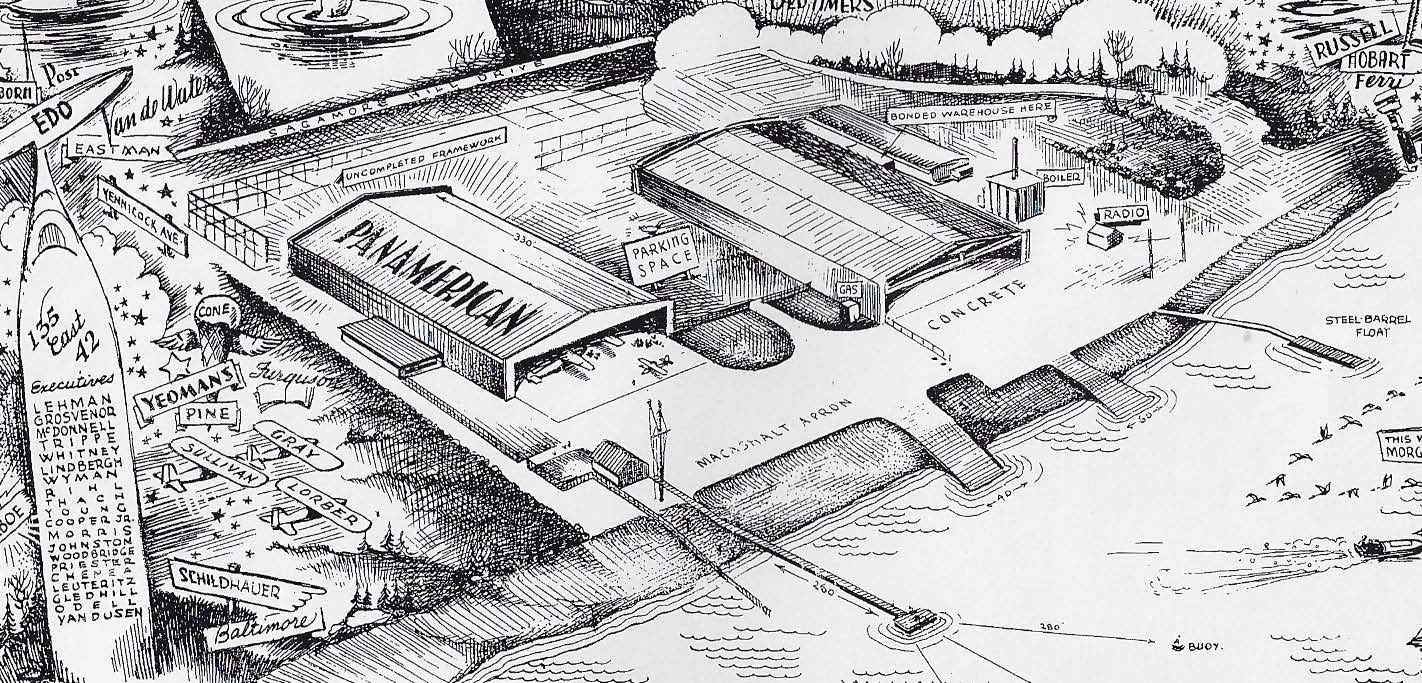
Pan American Airways acquired the 12-acre American Aeronautical Corporation's hangar and seaplane ramp complex as interim departure point until permanent facilities are constructed in North Beach, Queens. Pan Am built a second hangar in 1936.
1936-1937
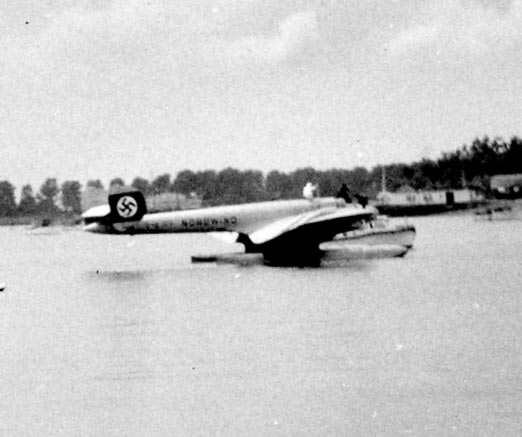
Germany began transatlantic service using combined sea and air operations. Positioning the Schwabenland, a rebuilt freighter, near Long Island, and the Friesenland, a purposely-designed catapult ship near the Azores, the Germans inaugurated transatlantic service with two Blohm and Voss HA-139s respectively designated "Nordmeer" and "Nordwind." Note: The German swastika on the fin.
September 11, 1936
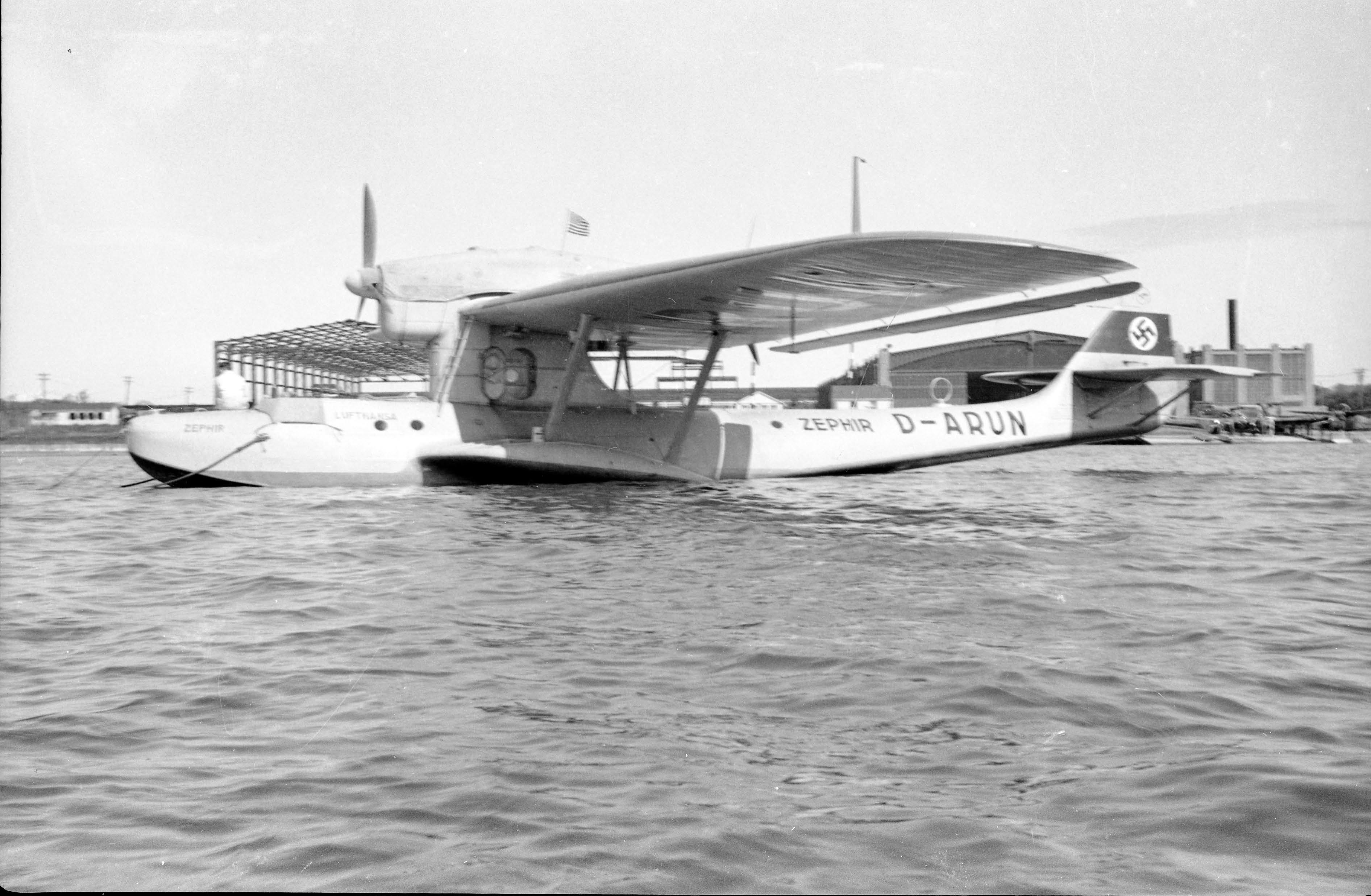
The German Dornier Zephir (D-ARUN) was launched by catapult from the seaplane tender Schwabenland at Horta, Azores, flying the 2,270 miles to New York City in 22 hours 12 minutes.
1937
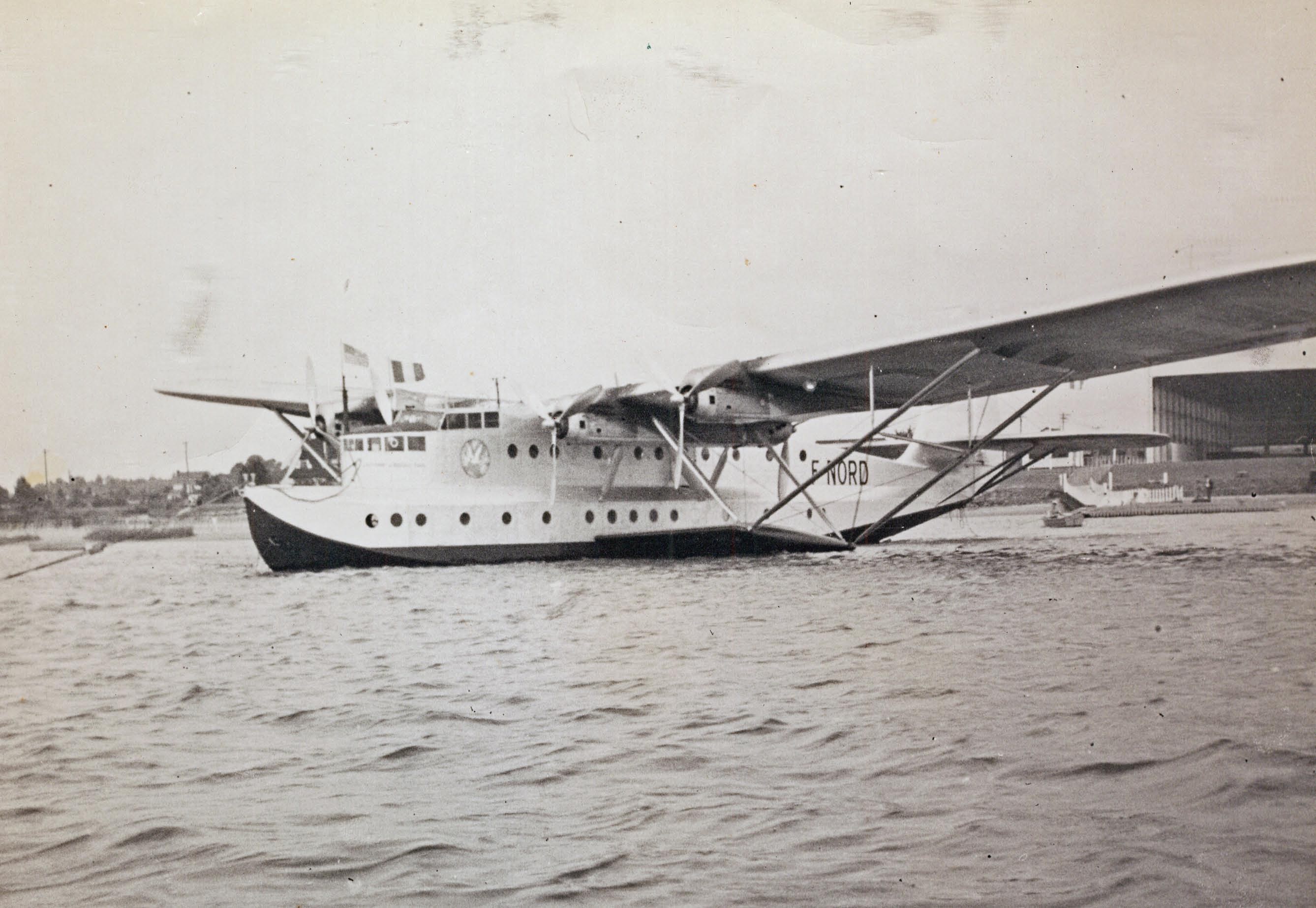
A six-engine French Latecoere Late 521 (F-Nord) setting several seaplane records for distance.
Late 521 landing in Manhasset Bay at the 47 second mark
June 16, 1937
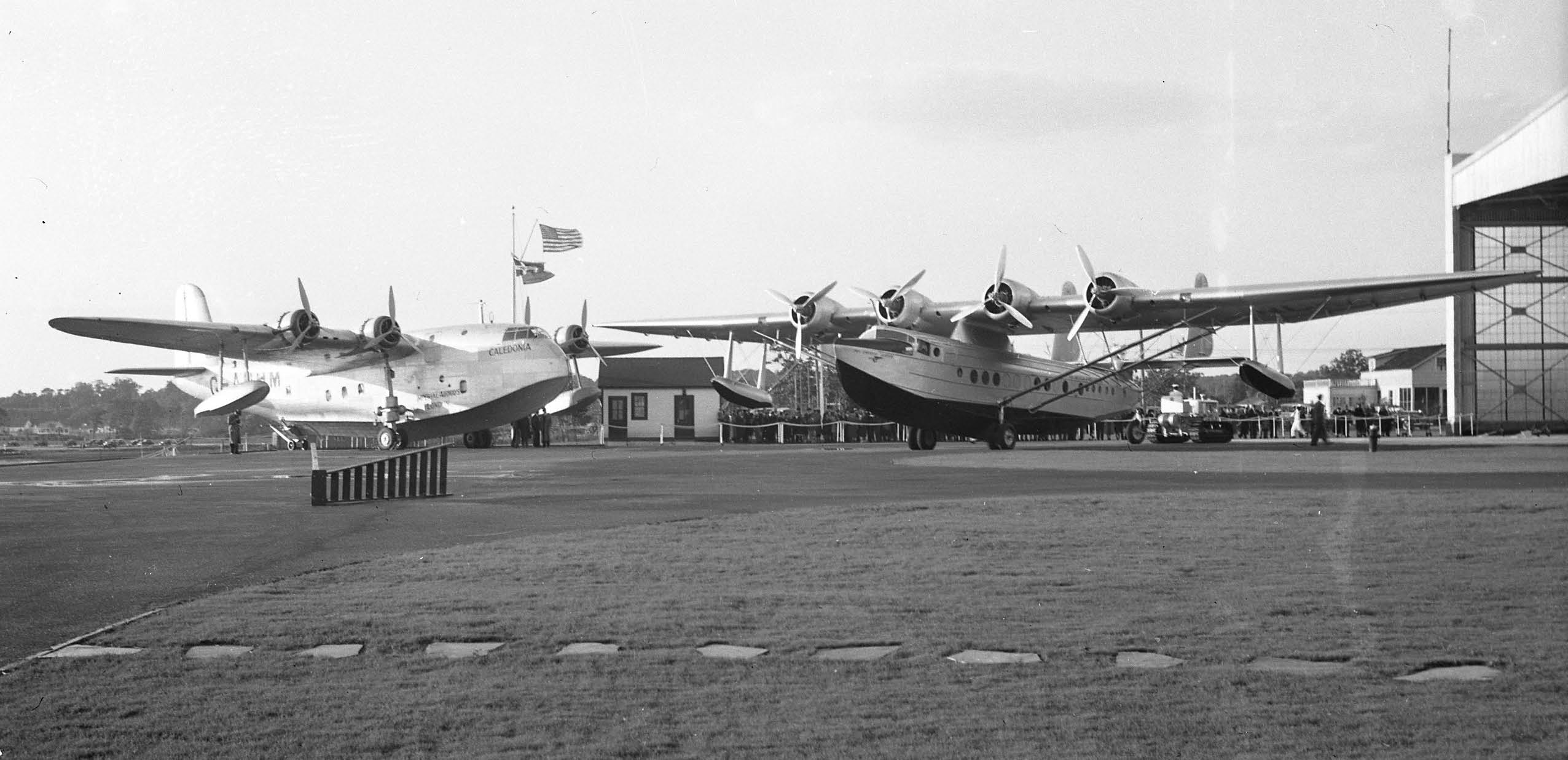
Regular New York to Bermuda service was established by the arrival of the Imperial Airways flying boat "Cavalier", carrying 14 passengers. Pan American would make its initial flight to Bermuda with the Sikorsky S-42 "Bermuda Clipper".
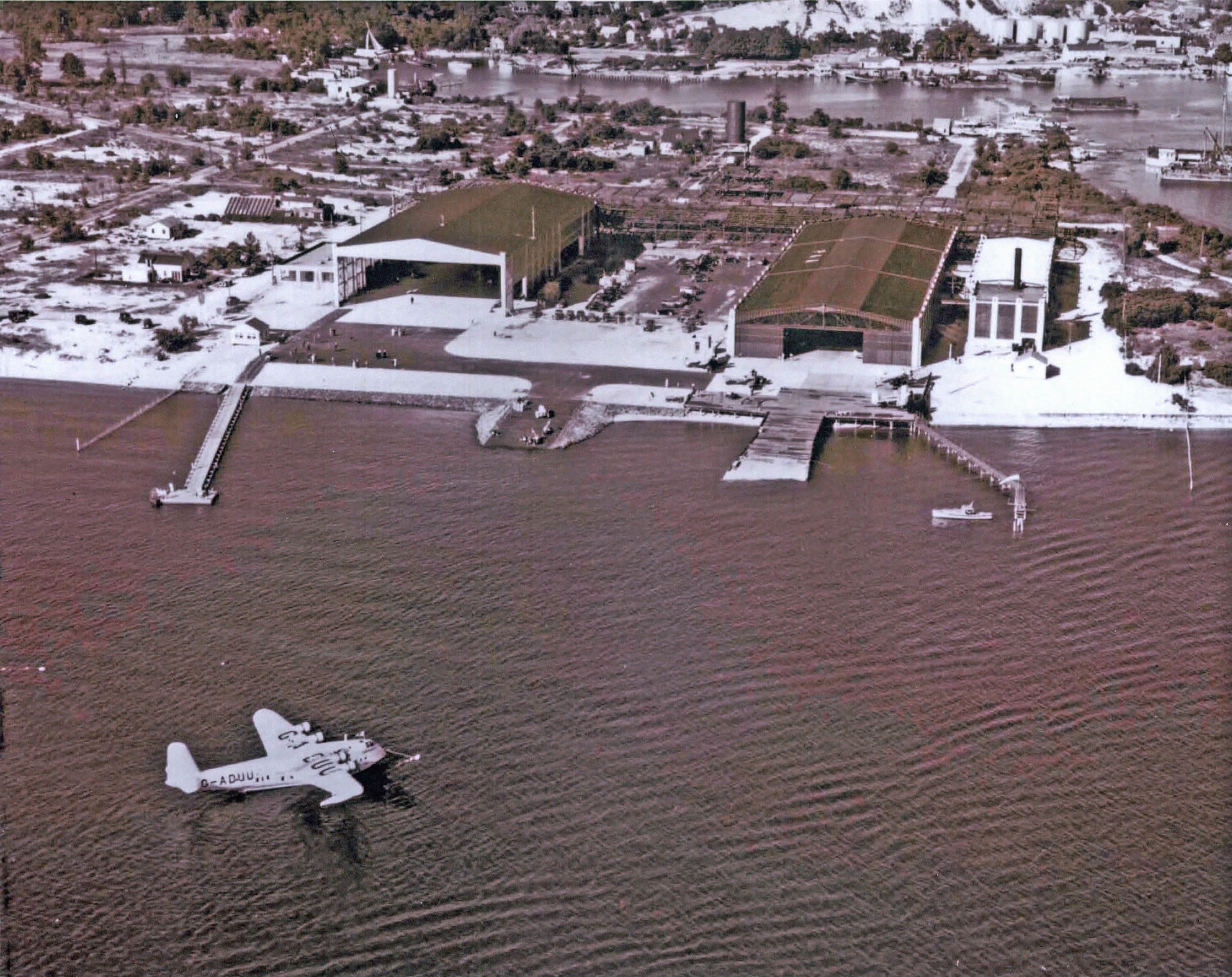
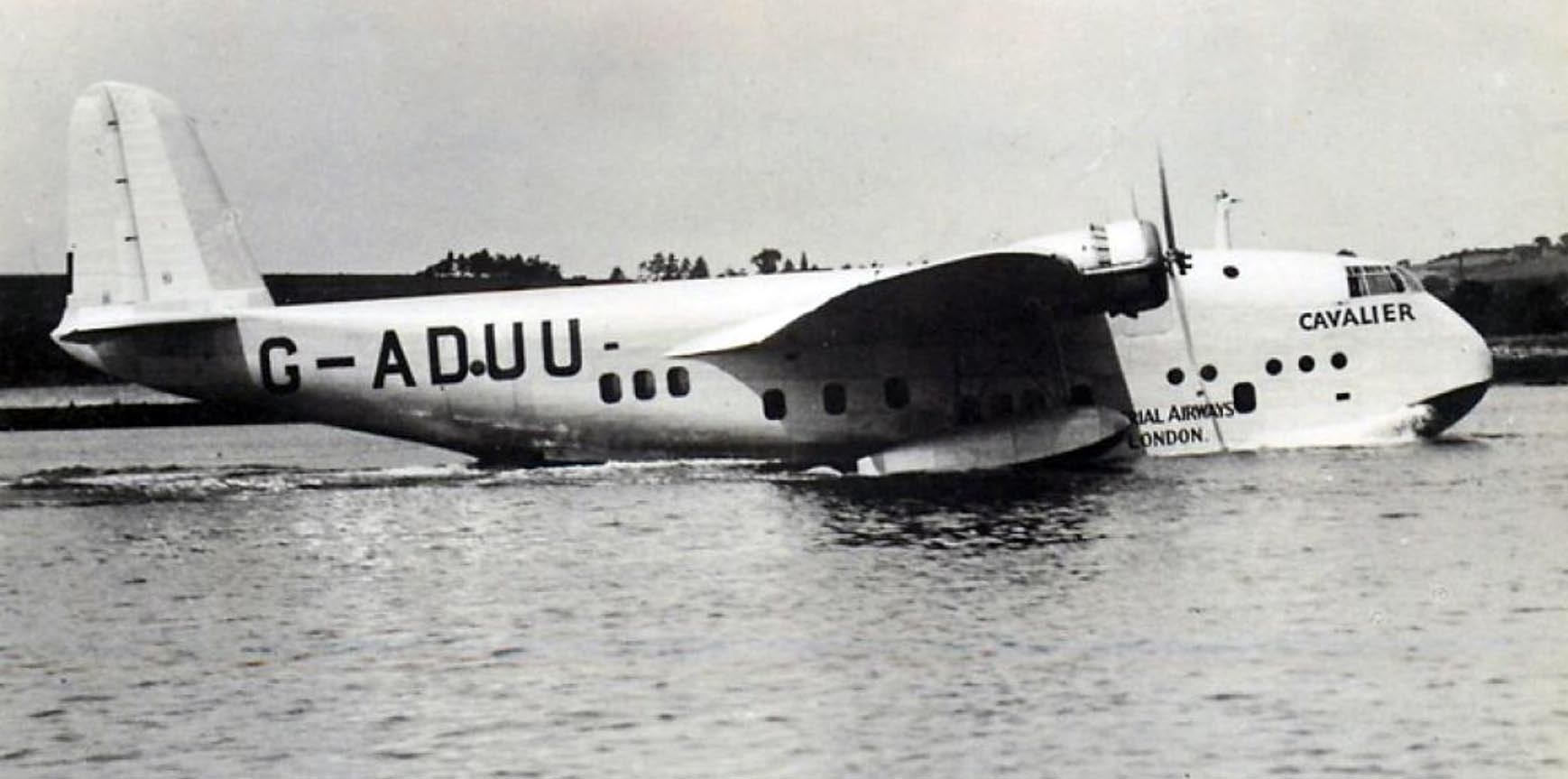
July 3-6, 1937
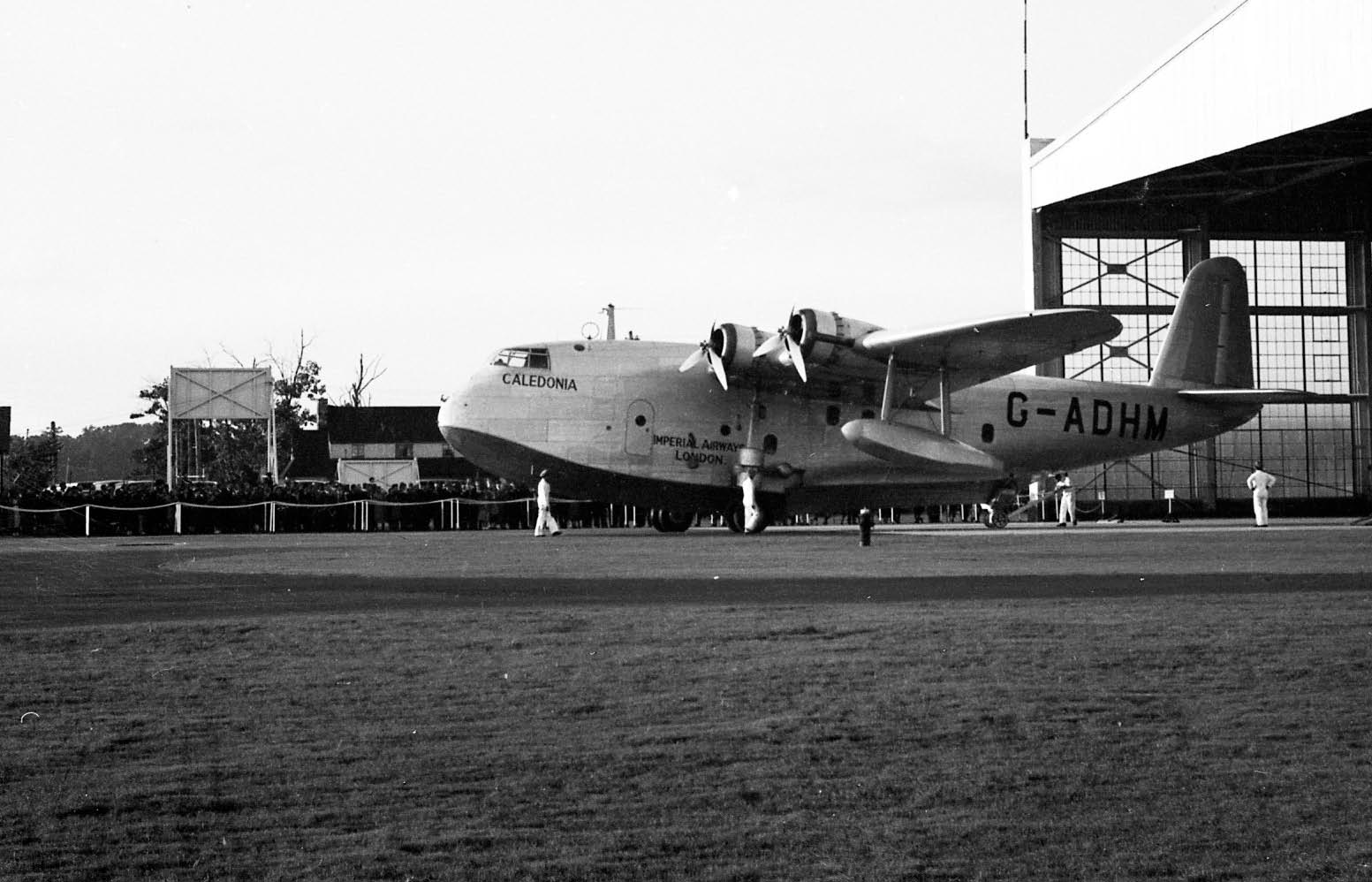
First commercial survey flights across the North Atlantic made by the Pan-Am Sikorsky S-42-B "Clipper" and Imperial Airways Short Brothers G Class "Caledonia" (G-ADHM).
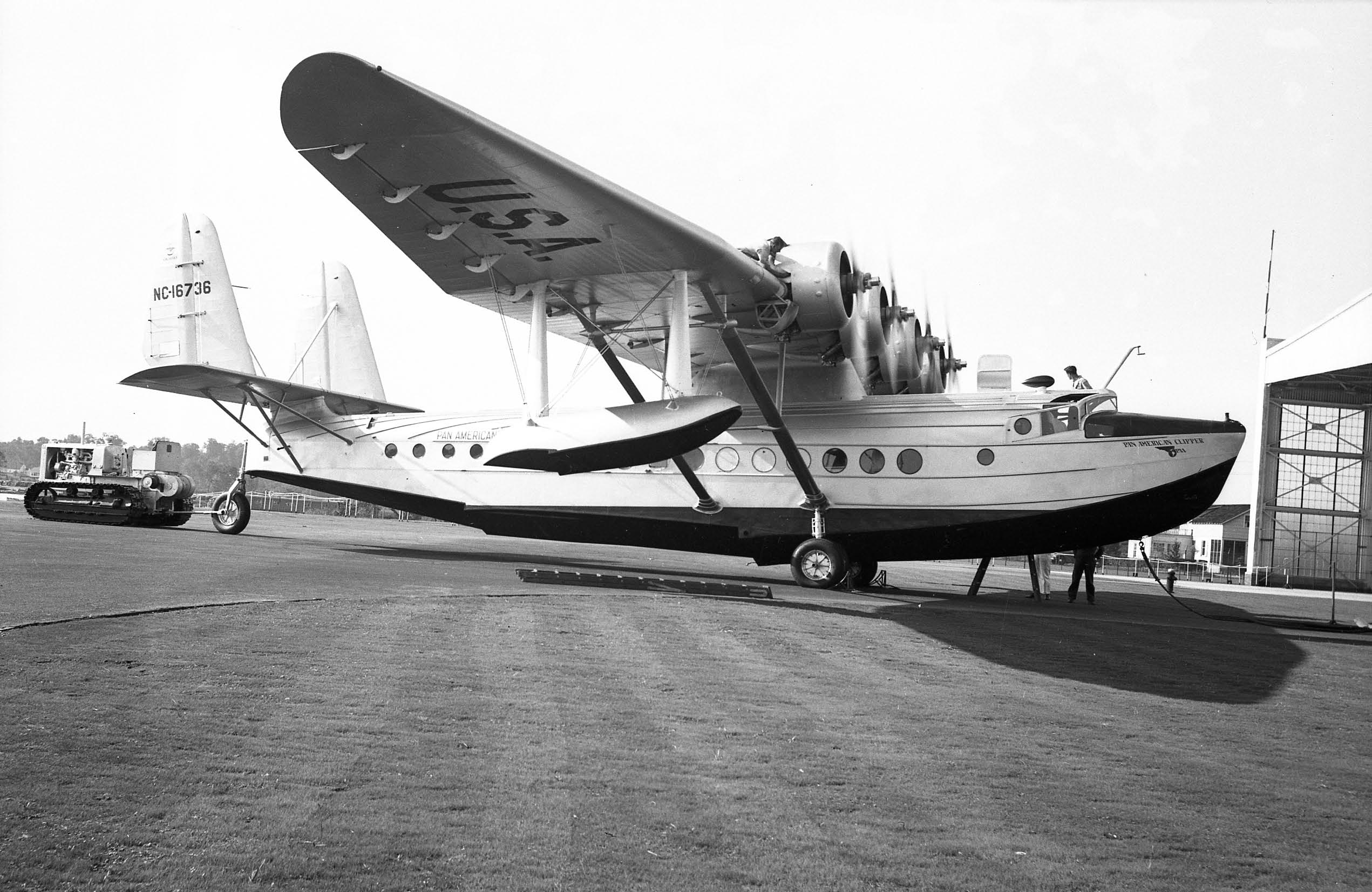
Pan-Am Sikorsky S-42-B "Clipper"
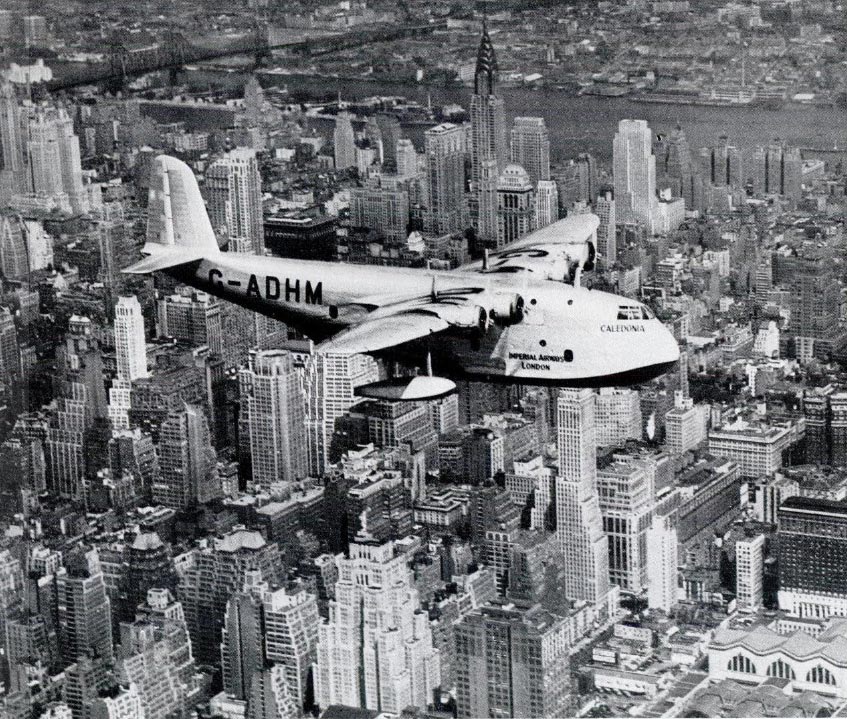
Imperial Airways Short Brothers G Class "Caledonia"
The flights of Caledonia and Clipper can be seen at the 3:25 mark of this newsreel.
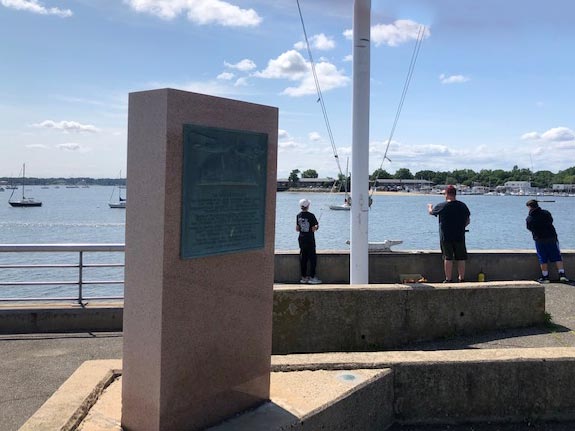
Monument to the First Commercial Survey Flights by the Pan-Am Sikorsky "Clipper" and the Imperial Airways Short Brothers "Caledonia" erected by the Poet Washington Wings Club in October 1969.
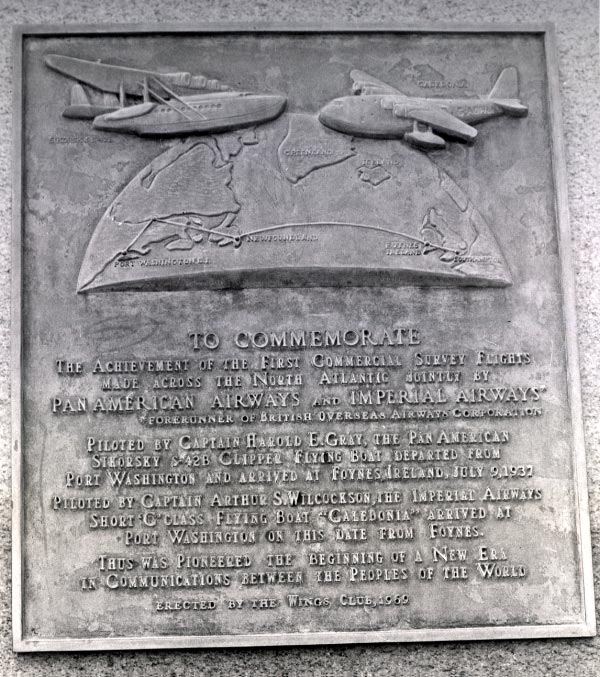
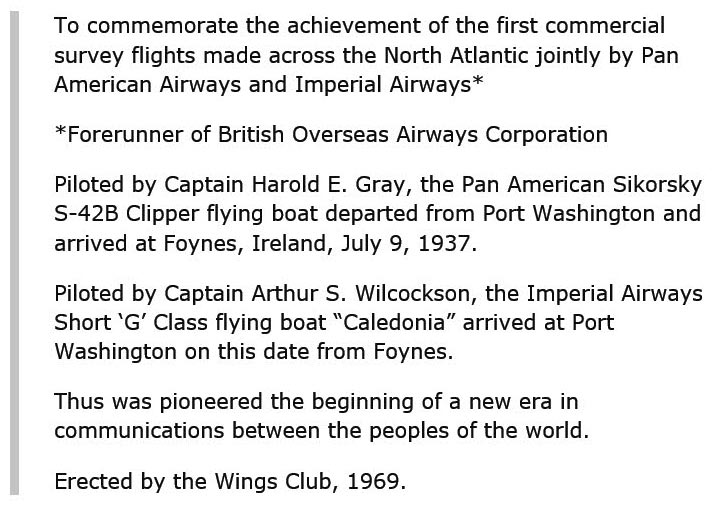
November 23, 1938
March 3, 1939
First Lady Eleanor Roosevelt christens the Boeing B314 Yankee Clipper in Baltimore.
March 26, 1939
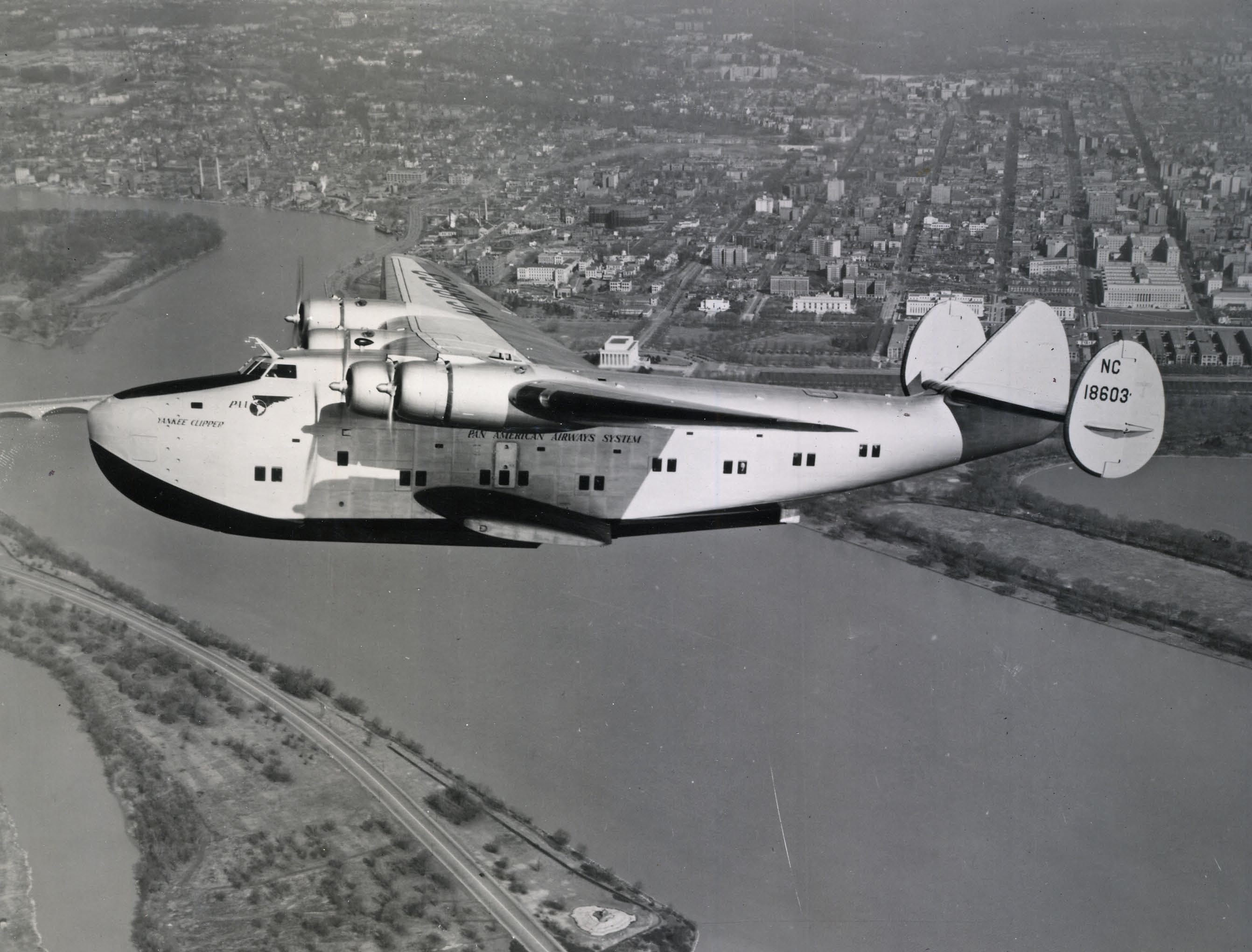
The first route by the Pan Am Boeing B314 Yankee Clipper carried 11 crew members and nine operation-related employees from Boeing, Wright Aeronautical.The seaplane crossed the Atlantic to Horta, before continuing to Lisbon, Biscarosse, and Marseilles. One week later it returned to Port Washington.
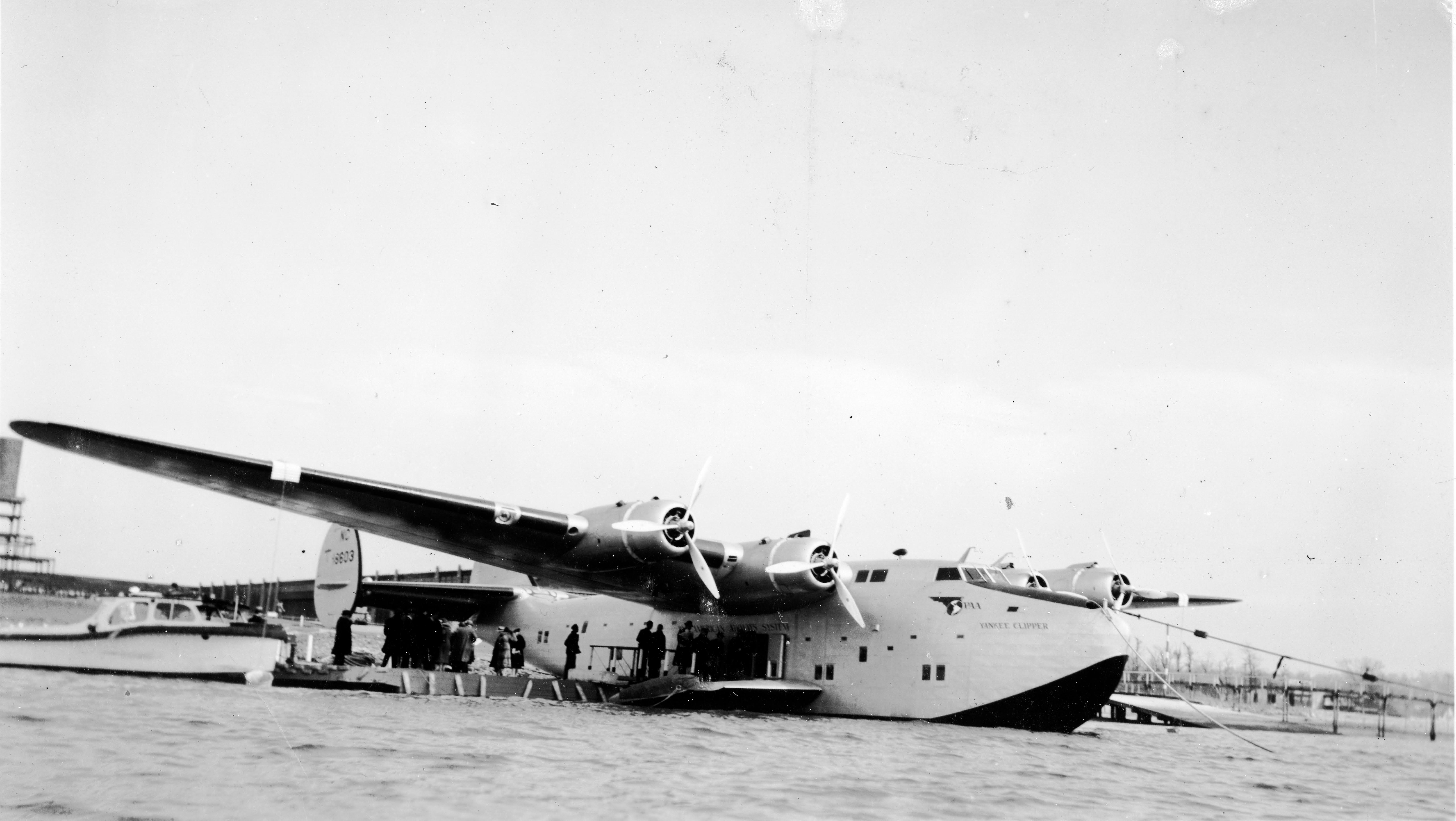
The Pan Am Boeing B314 Yankee Clipper being loaded loaded at an unidentified terminal, likely Baltimore.
May 20, 1939
The inaugural transatlantic mail flight by the Pan-Am Boeing B 314 Yankee Clipper took place on the 12th anniversary of Lindbergh's solo crossing in the Spirit of St. Louis. Piloted by Captain Arthur E. LaPorte, the colossal, high-winged, quad-engine, intercontinental flying boat circled the World's Fair, whose Aviation Day celebration was attended by the thousands, before commencing its aerial Atlantic journey. It then continued to the Azores, Lisbon, and Marseilles. Returning seven days later with 2,025 pounds of mail, it successfully completed the US's first scheduled, commercial, transatlantic round-trip, reciprocally mimicked by Imperial Airways, which had inaugurated its own ocean-spanning operation.
The Yankee Clipper can be seen at the 53 second mark.
June 28, 1939

The first successful transatlantic commercial passenger flight was made by the Pan Am Boeing 314 Dixie Clipper. Piloted by Captain Rod Sullivan, the "Dixie Clipper" inched away from the dock at 1500 local time with the 11 crew members, 22 passengers, and 408 pounds of mail. Connecting the North American and European continents, the "Dixie Clipper" landed in Horta , Azores and Lisbon, Portugal, before terminating in Marseilles, France. The journey took 23 hours and cost the passengers $675 round-trip. Courtesy of the Cradle of Aviation.
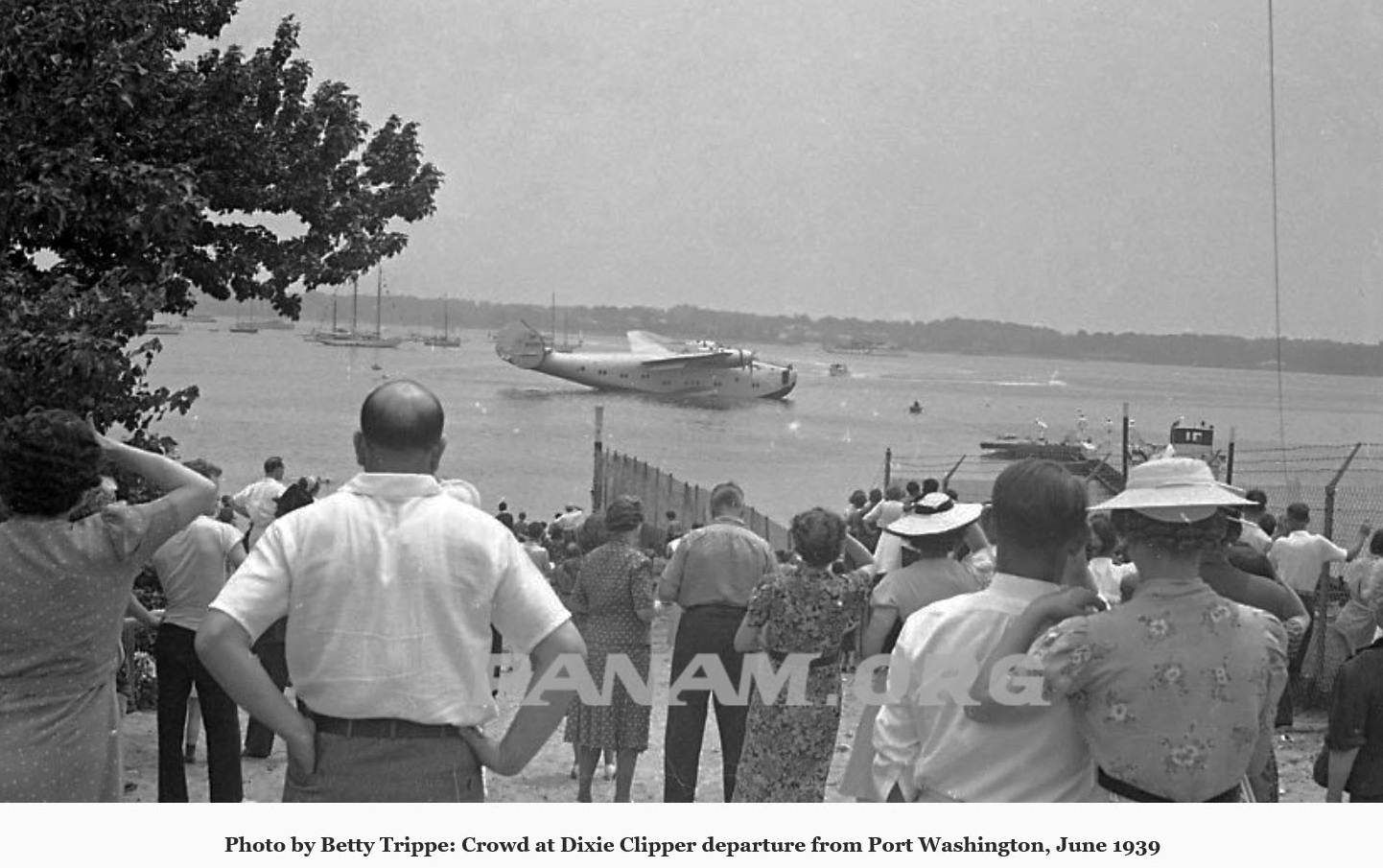
Photo by Betty Trippe, wife of Pan Am CEO Juan Trippe.
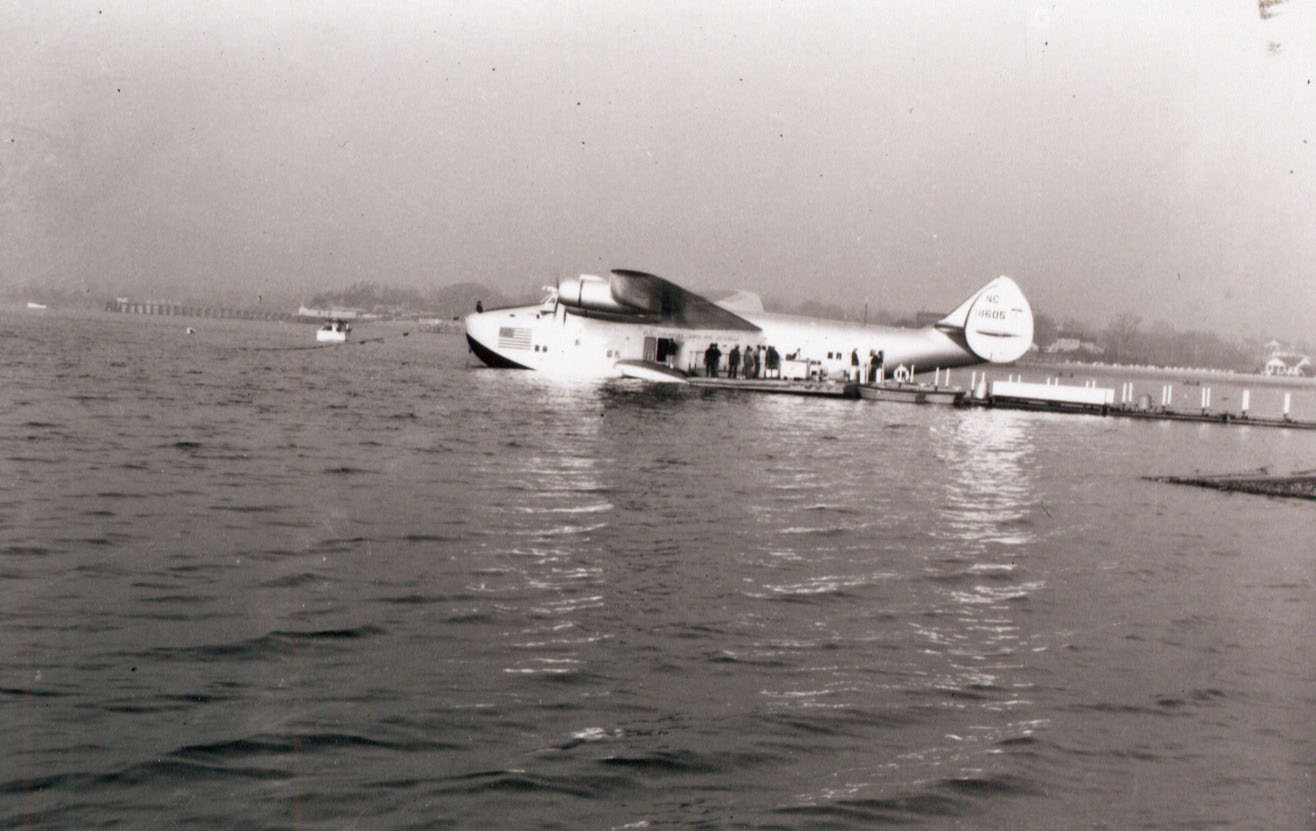
The Dixie Clipper being loaded in Manhasset Bay. Courtesy of the Cradle of Aviation.
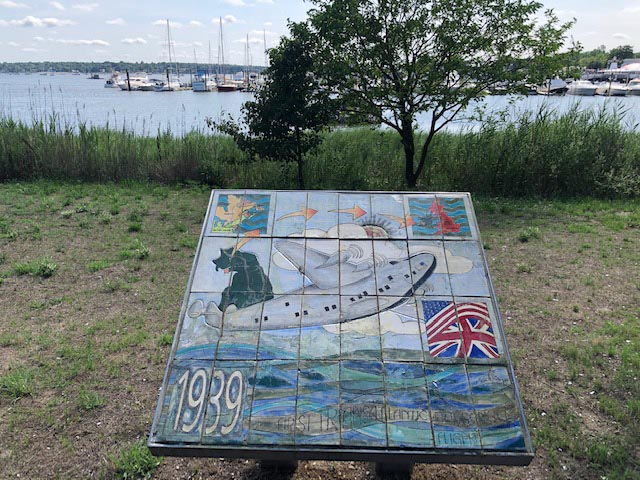
Artwork commemorating the flight was placed on the Port Washington North Bay Walk.
March 28, 1940
Less than a year of operations at Mahasset Bay, the Pan-Am Boeing B-314 fleet is relocated to North Beach, Queens, now the Marine Air Terminal of LaGuardia Airport.
1942-1945
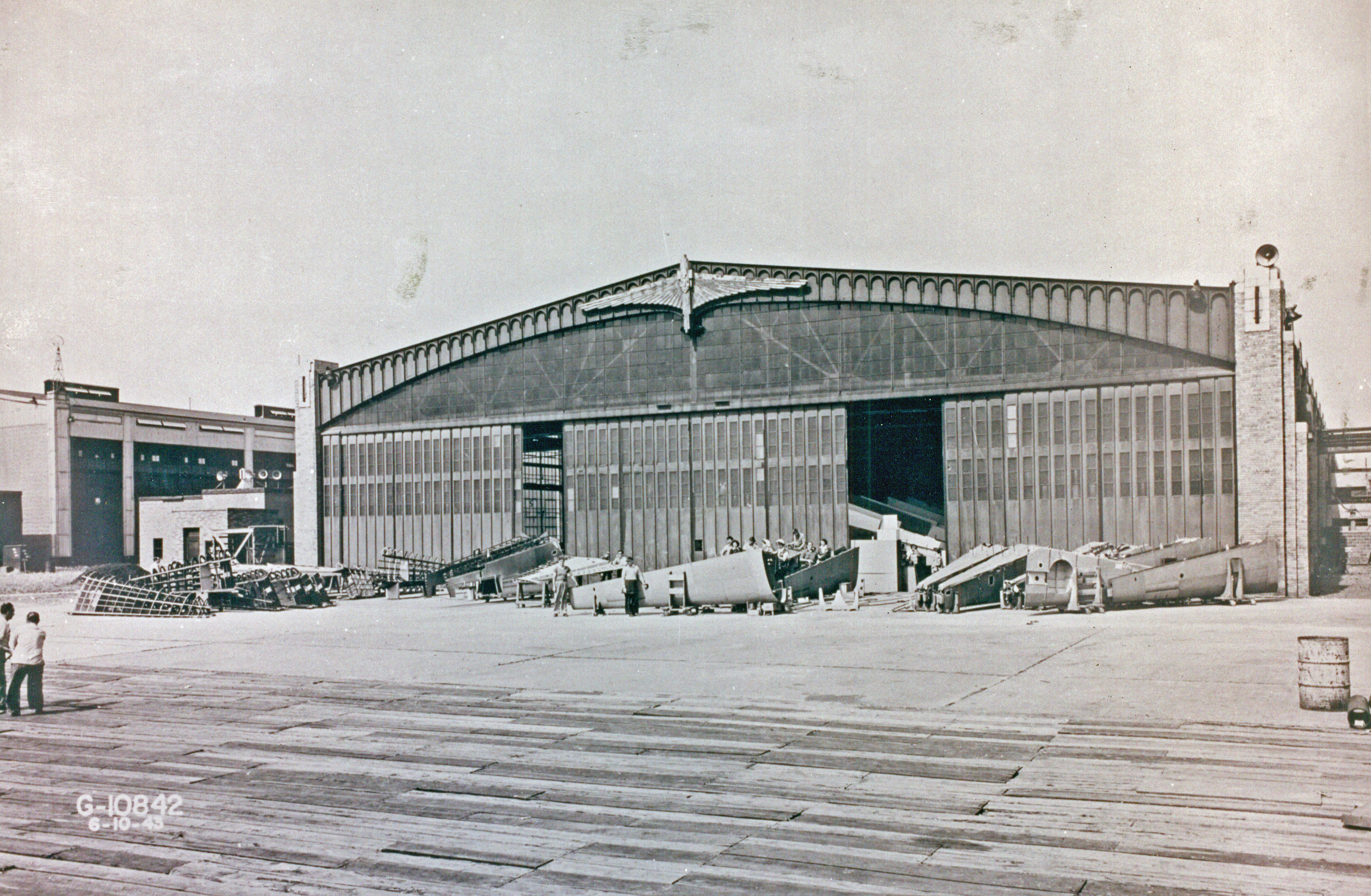
Grumman Corporation opens Plant #15 to build cowlings, turrets and wing panels for the Navy TBF Avenger torpedo-bombers and F6F Hellcat fighters
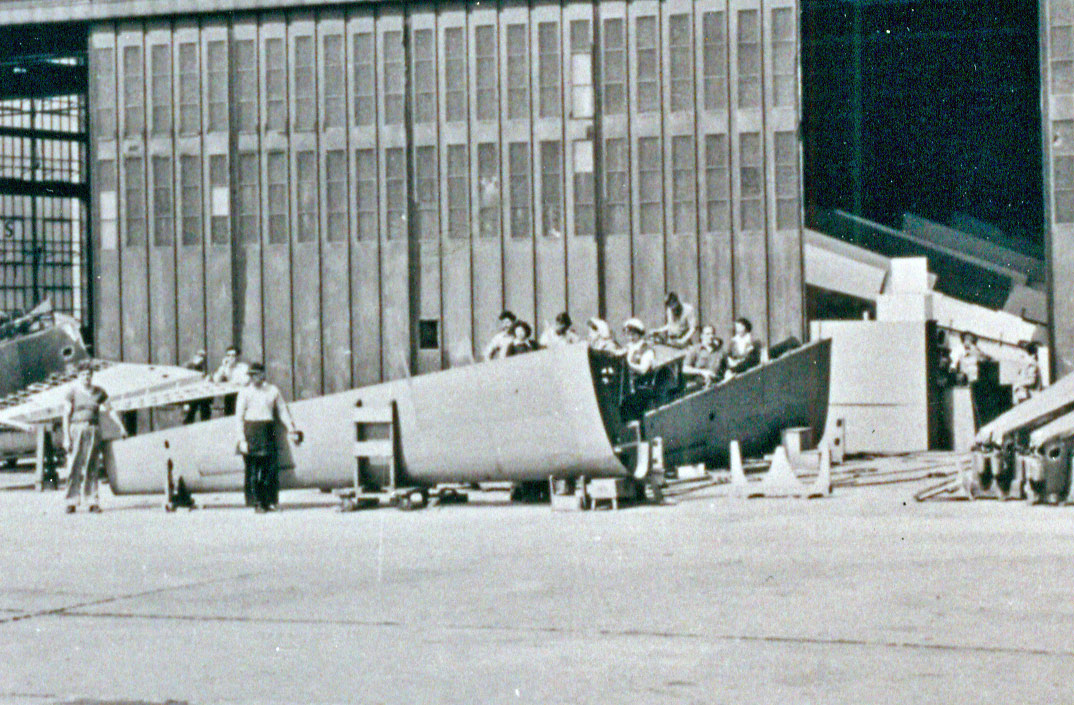
1951-1958
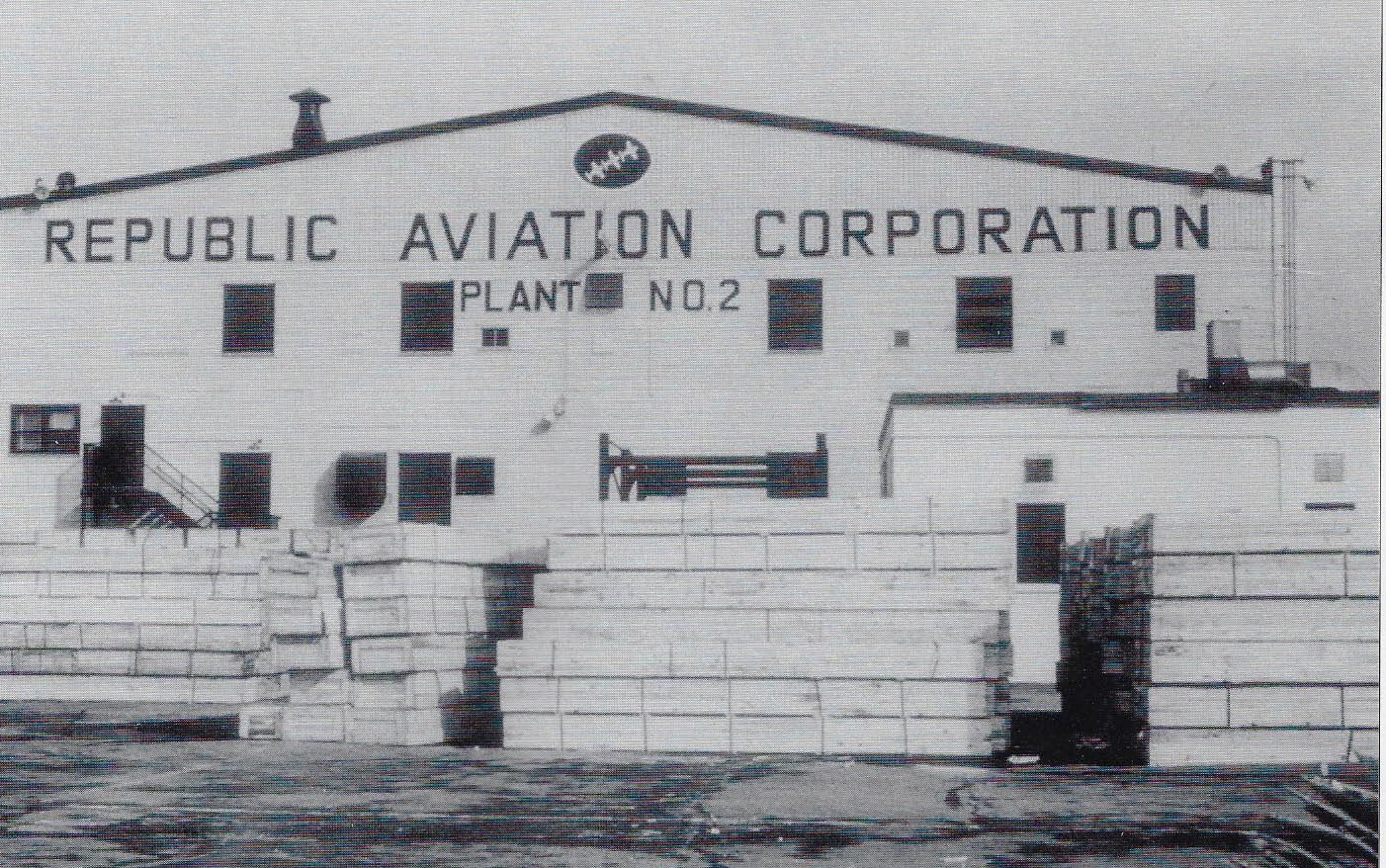
Republic Aviation occupies the Plant #15 (the original Pan Am hangar) to manufacture wings for F-84F, RF-84F, and F-105 fighter jets, as well as the subcontracted production for other manufacturers, such as Boeing.
1958- Current
The property was purchased by Thypin Steel.The large copper wings from the Pan Am hanger were given by Thypin to the Cradle of Aviation Museum in the early 1980’s.
1994
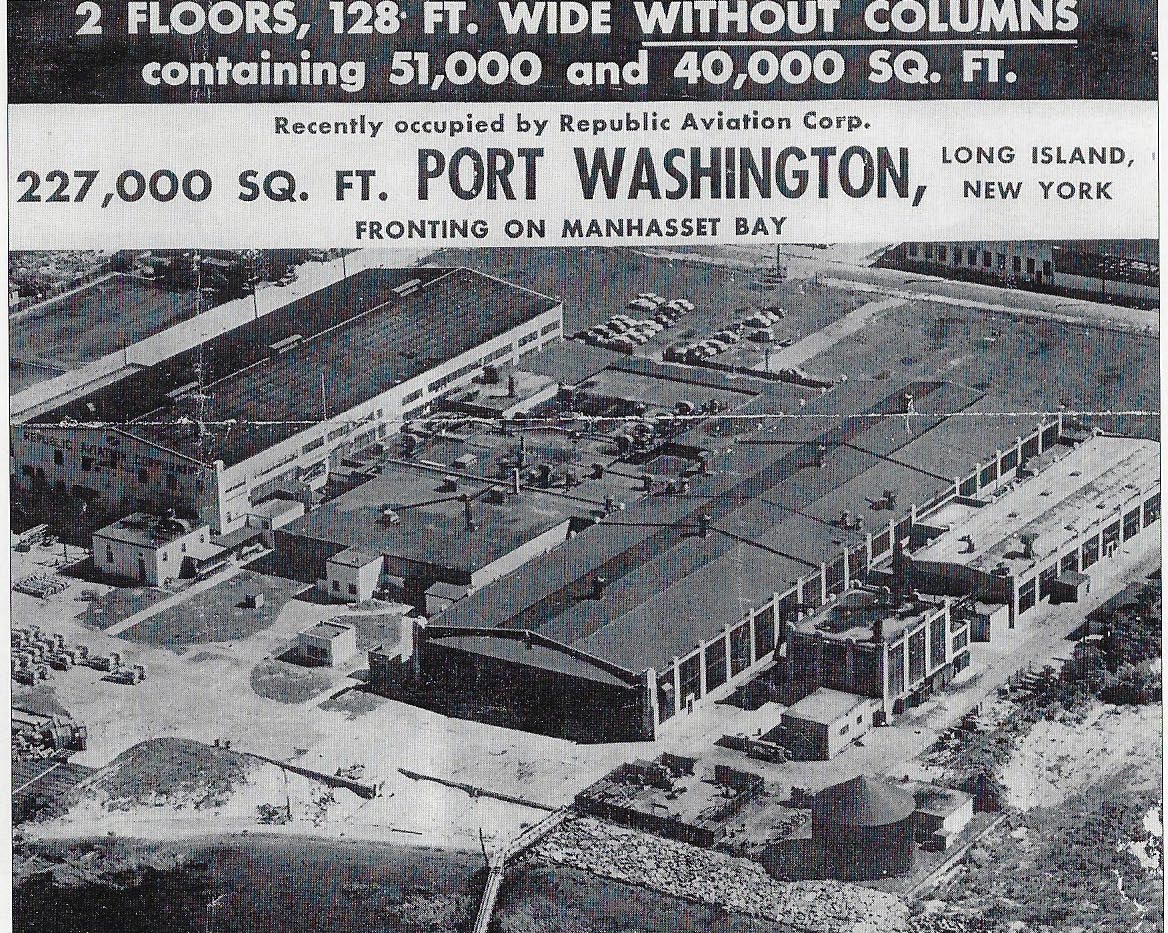
The remaining abandoned factory/terminal was torn by Thypin Steel. The property was being offered for sale by Thypin in this 1994 ad.
May 3, 2020
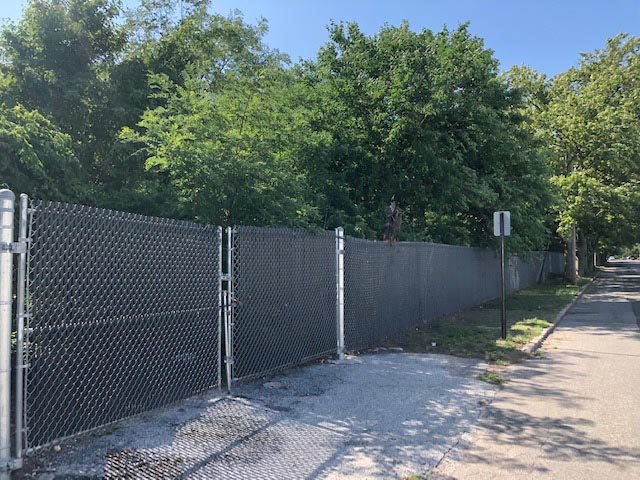
The 11-acre property has been classified as a brownfield and remains undeveloped and fenced.
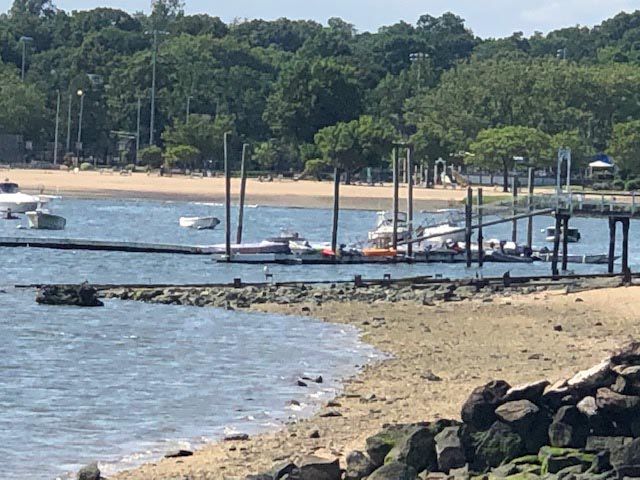
The original loading ramp of the terminals can still be seen at low tide.
Craig Romain created this amazing done video of the terminal area. Check out the girders thrown into Manhasset Bay.

Comments
Update: First day cover for the dedication of the New York Seaplane Airport (September 14, 1929) has been posted.
Did you notice that it’s an illustration of a Savoia Marchetti S55 airplane on the cachet rubber stamp.
The history has been updated with a film of First Lady Eleanor Roosevelt christening the Yankee Clipper and the Dixie Clipper’s first transatlantic passenger flight landing in Marseilles, France.
1929 architect’s drawing of the proposed factory/hanger of the American Aeronautical Corporation’s facility on Manhasset Isle and two of its seaplanes - the S-56 and S-62. From Air Transportation, June 22, 1929.